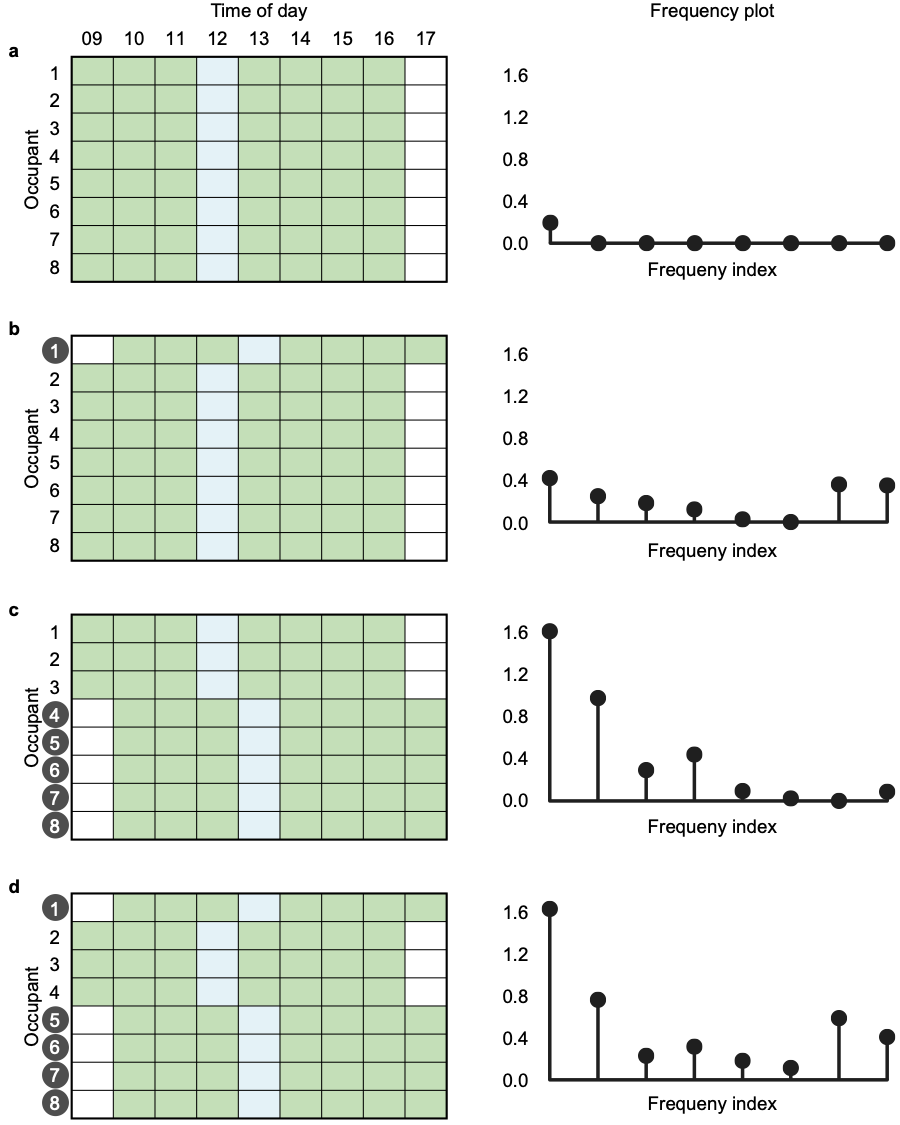Occupant network analysis
The role of occupant behavior within the physical building has been found to be an important factor in the overall energy use profile of commercial buildings. Recent research has noted the potential energy savings that can be achieved when occupant behavior is beneficially modified. However, frameworks for analyzing occupant behavior are limited in their ability to simultaneously consider three key dimensions of occupant-driven energy use in buildings: spatial, temporal, and social. This paper presents the occupant energy signal processing on graphs (OESPG) framework, which is able to address the three key dimensions of occupant energy use in commercial buildings through an inherently scalable mathematical structure. The OESPG framework is able to identify situations in which occupant energy use through plug loads is out of sync with what would be expected based on nuanced spatial and organizational aspects.
This figure shows how different schedule shifts can result in an increase higher frequencies' energies, helping to identify out-of-sync behavior.
